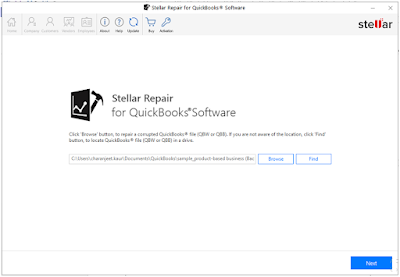Leading Australian Facial Surgeon: Understanding the Mini Facelift During a Surge in Demand and Amongst Younger Patients
Dr Michael Zacharia, an Australian ENT and Facial Cosmetic surgeon, has unveiled new insights into mini facelifts amid new data revealing the cosmetic procedure is on the rise in Australia.
Recent data highlights a significant rise in the popularity of mini facelifts in Australia, reflecting a growing trend towards less invasive cosmetic surgery options. Since 2017, the demand for mini facelifts has increased by 60% amongst younger generations according to industry reports, as more individuals seek subtle yet effective facial rejuvenation solutions.
In a recent survey, facelifts and partial facelifts were the third most popular cosmetic procedure over the past six years, showing a steady increase in patients aged 35 – 55*.
A mini facelift, a minimally invasive procedure, targets early signs of ageing in the lower face but not the neck. Unlike a mid facelift, which addresses the middle face, a mini facelift focuses on the lower face and jowls. Mini facelifts are popular due to their shorter recovery times, reduced scarring, and natural-looking results.
Typically, mini facelifts are sought by individuals in their mid-30s to late 40s who are experiencing mild to moderate sagging and wish to refresh their appearance without the downtime associated with more extensive surgeries. This age group often notices the initial stages of facial ageing in the lower part of the face, including the jawline and lower cheeks.
“Mini facelifts have gained traction because they offer a less invasive option with excellent results. Patients appreciate the subtle, natural enhancements that allow them to look rejuvenated without looking ‘overdone’,” said Dr Zacharia.
“While a traditional facelift addresses more pronounced signs of ageing by repositioning deeper facial tissues, a mini facelift focuses on the superficial layers, providing a lift where it’s needed most with a quicker recovery period. This makes it an attractive option for those not yet ready for a full facelift. When comparing a mini facelift to a deep plane facelift, mini facelifts involve less invasive techniques, primarily targeting the lower face, which results in a quicker, less complicated post-surgical period with less swelling.”
Dr Zacharia answers your questions about mini facelifts:
1. Can those in their 20s get a mini facelift?
Generally, young patients in their 20s are recommended to try a non-surgical option like Emface first. Emface repositions the muscles of the face and usually achieves the desired results for this age group. However, the decision to plan surgeries is not based solely on age. A patient’s readiness for a facelift is determined by evaluating their anatomy and mental health, and they also need the support of their GP, including a referral letter. Additionally, patients are screened for body dysmorphia using a survey tool or by consulting with a psychologist. This comprehensive approach ensures that any surgical intervention is appropriate and beneficial for the patient’s overall wellbeing.
2. When should I consider a Mini Facelift?
Consider a mini facelift if there are concerns about removing sagging skin, particularly in the lower face, reducing the appearance of jowls and marionette lines (lines going down from the corners of the mouth), and enhancing the contour of the jawline. This procedure targets the lower third of the face, making it an ideal option for those looking to refine and rejuvenate this specific area.
3. Will a mini facelift leave me with less scarring?
Yes, it can leave a shorter scar than an extended Face Lift or Neck Lift.
4. Will a mini facelift help ease my eye sagging?
No, a procedure such as a Blepharoplasty, SOOF Lift or Brow lift would be recommended. This can be performed at the same time as a Mini Face Lift.
5. Can a mini facelift stop jowling from coming back?
A mini facelift effectively reduces the appearance of jowls by tightening the skin and defining the jawline. In the short term, patients experience immediate improvement with minimal swelling, quick recovery, and noticeable results within a few weeks. Long-term benefits include sustained results lasting around 5-7 years, slower progression of further sagging, and potential maintenance with non-surgical treatments. While less invasive than a full facelift, it offers a significant improvement for those with early signs of jowling. However, you will still continue to age and gravity and lifestyle factors will always continue the ageing process, so it is a possibility for jowls to return.
6. Can a mini facelift soften marionette lines?
Yes, it can. However, for deep marionette lines, the deep plane technique may be necessary for the lower face region to lift both the muscle and skin. This approach provides a beautiful, natural-looking result without the windswept or wide-mouth appearance that can occur with other techniques.
7. Can using fillers postpone a surgical facelift?
Small amounts of filler in the cheeks, nasolabial folds, or marionette lines can temporarily enhance your appearance and delay a facelift. Fillers revolumise rather than lift the face, and overuse can lead to an augmented look, whereas a facelift restores tissues to their original position for a natural look. It’s advisable to wait several weeks after filler injections before undergoing a facelift and avoid filler immediately after surgery to allow healing. Emface can lift facial muscles, while Ultraformer 3 tightens skin, offering temporary benefits. However, for significant excess skin, surgical intervention may be more suitable.
8. If I have a mini facelift, can I get a mid or deep plane facelift later in life?
Yes, you can have a mini facelift and still opt for a mid or deep plane facelift later in life. A mini facelift addresses early signs of ageing with less invasive techniques, providing a more subtle improvement. As you age, a mid or deep plane facelift can offer more extensive rejuvenation by lifting deeper tissues and addressing more significant sagging and volume loss. Having a mini facelift earlier doesn’t preclude more advanced facelifts later; it can actually help maintain your look and potentially make future procedures more effective.




